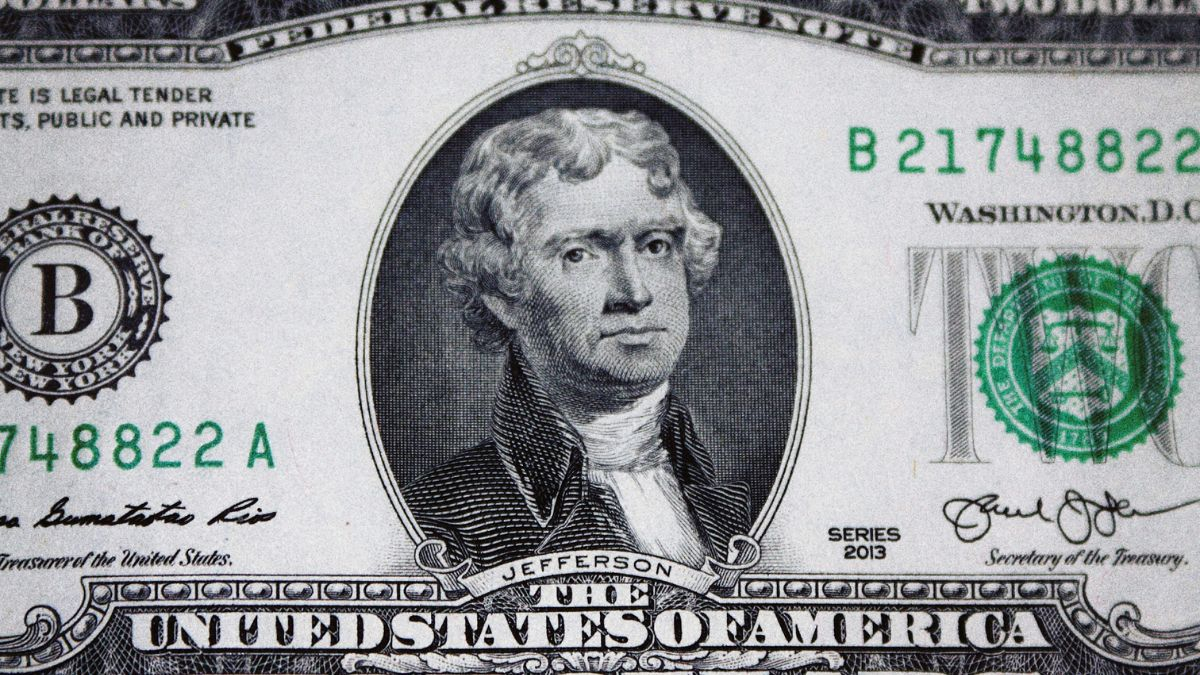The $2 bill has a fascinating piece of history that has caught the attention of collectors worldwide. Yet to many, it simply is another piece of currency that fills their pockets or stays in their purses. Some $2 bills from the 19th century can fetch you thousands of dollars today. If you have one of those rare bills, you could be sitting on quite a fortune.
When was the $2 bill first issued?
During the Civil War, the first $2 bill was introduced in 1862 and was issued with Alexander Hamilton, the first Secretary of the Treasury, on the front. This design was short-lived and replaced in 1869 with what is now a familiar portrait of Thomas Jefferson.
Despite its long history, the $2 bill has never been as widely used as other denominations. This has made early versions, particularly from the 19th century, rare and highly collectible.
Read more: Say goodbye to these dollar bills in 2025: the new designs for the money in your wallet
Why are some $2 bills worth more than others?
The value of a $2 bill depends on several factors, including its age, condition, and unique features. Here are some key details:
- Year of issue: The older the bill, the more valuable it is likely to be. For example, uncirculated bills from 1862 can fetch between $500 and $2,800, according to U.S. Currency Auctions.
- Condition: A bill in pristine condition is far more valuable than one that is torn, stained, or heavily circulated.
- Design and rarity: Bills with unique designs, misprints, or unusual serial numbers are especially prized by collectors.
How much could your $2 bill be worth?
The value of a $2 bill can range significantly based on its characteristics. Here are a few examples:
- Uncirculated 1862 $2 bill: These can sell for $500 to $2,800 depending on their condition.
- 1869 $2 bill featuring Jefferson: Known for its colorful design, this bill can fetch up to $3,800.
- Uncirculated 1890 $2 Treasury Note: This bill is exceptionally rare and can be worth $550 to $4,500.
Even modern $2 bills, such as those printed in the 1990s or 2000s, can hold value if they are uncirculated or have a unique serial number.
Where can you sell a valuable $2 bill?
If you think you have a rare or valuable $2 bill, here’s what you can do:
- Consult an expert: Talk to a numismatist or currency expert to determine the value of your $2 bill.
- Check online auctions: Places such as eBay or Heritage Auctions tend to sell collectible currency.
- Go to a coin and currency show: These tend to attract the more serious buyer wanting to purchase collectible bills.
How can you identify a rare $2 bill?
If you are unsure about the value of your $2 bill, then you could check for the following things:
- The printing date. Anything printed before 1976 is very likely to have some value.
- Serial numbers that are unique, like low numbers, repeating figures, or star notes.
- The overall condition of the bill. Do not fold or tear it if it really has value.
